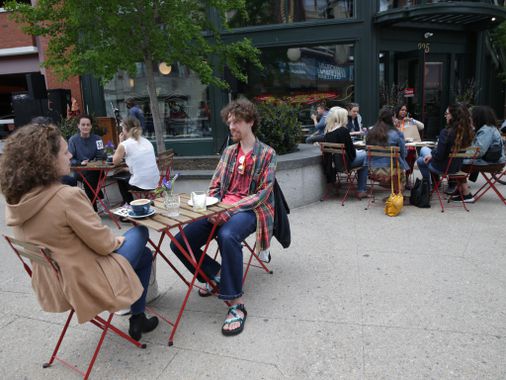And the new figures show something else: The cities and towns in the northern part of the state are growing faster than those in the south, reversing a trend seen in the previous decade.
There were population gains in Providence County, including cities such as Central Falls (up 16.6 percent), Providence (up 7.2 percent), and Pawtucket (up 6.3 percent) but also in suburban towns such as Cumberland (up 8.7 percent), Lincoln (up 6.7 percent), and North Providence (up 6.3 percent).
Kimball W. Brace president of Election Data Services, who has been Rhode Islands redistricting consultant since 1983 briefed state legislative leaders about the new census data on Friday. And he told the Globe that the data reflect a clear shift in population from southern to northern Rhode Island.
Things are moving north, as opposed to south, Brace said. It is reversing what took place the previous decade. Its cities growing, but also Cumberland and suburbs growing. It seems like heading into Providence County is the way to go.
Brace said further analysis will be needed to pinpoint the reasons for the shift north. But he said possible explanations include the price and availability of housing.
Certainly, as younger people are looking for housing, it was getting to be high-cost in the southern part of the state, and that may be driving people to come back into the cities as, for example, the old mills are turned into condos, he said. That is probably partly the case.
Along the southern coast, the town of Narragansett saw its population drop by 8.4 percent, and in the East Bay, the town of Bristols population dipped by 2 percent. (The Block Island town of New Shoreham did see a 34.2 percent increase in its population, but it still has only 1,410 people.)
Brace also gave credit to efforts to ensure that the census included residents in hard-to-count populations in Rhode Island.
In Central Falls, they did a marvelous job in getting people to answer the census, he said. The fear we had all along with the Trump administration and the citizenship issue was that it would deaden participation in the census in places like Central Falls. But it didnt look like it did.
Central Falls, a 1.29-square-mile majority-Latino city, contains many undocumented residents who officials believe have not been included in past census counts. But the city made a concerted effort to identify and count as many residents as possible over the past three years, and the citys census tally shot up from 19,376 residents in 2010 to 22,583 in 2020.
Central Falls, Providence, and Rhode Island had joined other cities and states including Massachusetts and Connecticut in a lawsuit that challenged former president Donald J. Trumps memo aimed at excluding undocumented immigrants from the apportionment count. And the Supreme Court stopped the Trump administrations attempt to add a citizenship question to the 2020 census.
Now that the new census figures are available, the political mapmakers can begin their work, with Brace helping them to draw new boundaries for General Assembly districts as well as congressional districts.
On Wednesday, House and Senate leaders named an 18-member redistricting commission, which will make recommendations to the full Assembly by Jan. 15. The Black Lives Matter RI PAC blasted the appointments as a clear act to shut out progressive voices.
John M. Marion, executive director of Common Cause Rhode Island, said that other states often see redistricting used as a tool to keep the majority party in power and to extend that partys dominance. But in Rhode Island, the Democratic Party is so dominant that redistricting is more often used as a way to entrench the legislative leaders place in their caucus, he said.
Marion said that while much of the focus will be on House and Senate redistricting, the commission will also be drawing the lines between the states First and Second Congressional Districts.
Marion said that, arguably, the most controversial thing the redistricting commission did 10 years ago was to move the town of Burrillville from US Representative David N. Cicillines First Congressional District to Representative James R. Langevins Second Congressional District.
The move was seen as a way to help Cicilline, a Democrat facing his first re-election against former State Police superintendent Brendan Doherty. The initial redistricting proposal was modified after drawing objections from Langevin, a fellow Democrat.
Edward Fitzpatrick can be reached at edward.fitzpatrick@globe.com. Follow him on Twitter @FitzProv.read more
The population of Rhode Island is bigger, more diverse, and has shifted north


